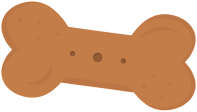This resource is included in the Zoo Animals for EFL. Click here:
https://www.teacherspayteachers.com/Product/Zoo-Animals-Flashcards-for-EFL-3611842
Teach
your learners about how the zoo animals move and review the vocabulary related
to the locomotion expanding their language skills.
Perfect for introducing or reviewing the verbs. Write a verb under each flashcard to show what each zoo animal is moving. Encourage the ELLs to observe and describe how the animals move in each flashcard.
Then, place two flashcards on the board. Ask
the students what the animals are doing. Write the verb and ask questions.
Teacher: Can the bear climb trees?
Students: Yes, it can.
Teacher: Can the elephant climb trees?
Students: No, it can´t.
Sort
what the animals can do using the flashcards: walk. Gorilla, monkey, hippo and
ostrich!
Animals have same abilities. Sort them out.
Teacher: Which animals can climb?
Students: the monkey, the bear.
Some
zoo animals can fly. Write the words can fly and have the students guess
which animals can do the action, as they do it themselves in a mime.
Or
create a sorting table on the board and students can come up t place the flashcards
to the corresponding verb.
Integrate
the animal movement with the physical education activities. Have the students
imitate the movement of the animals on each card. Use my movement verb table.
This resource has more to check, go to this blog post: https://eflelementaryresources.blogspot.com/2025/03/giraffes-numbers-1-to-20-for-elementary.html




.png)
.png)
.png)
.png)
.png)


















.png)
.png)













.png)







